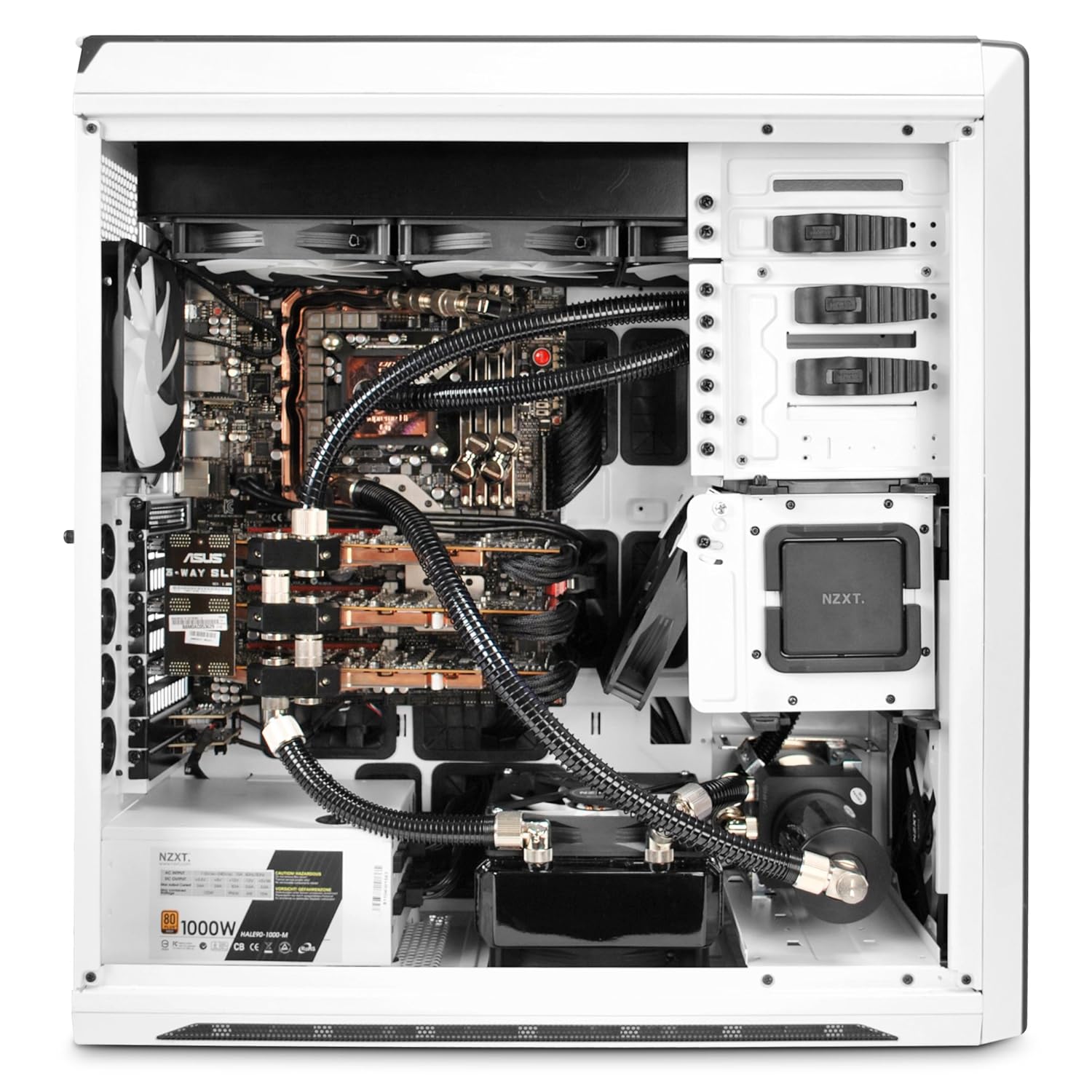Hi everyone I'm glad I found the site, although I'm in the US the information and knowledge is the same. I'm completely new to building PC's, however, I've really put a lot of research into it and have watched hours of build videos and product videos to expand my knowledge. I'm confident in the build process now so I will be building my first PC as soon as I can put some money together.
I thought liquid cooling was a simple process like slapping another fan in the case to cool things down, it can be but it can be much more complex. There are some crazy water cooling setups out there but I'm not into that extremeness it is cool but not feasible or realistic for me to attempt, also I don't know how much return I would get out of it being so inexperienced. However, I am confident that I could understand a diagram and complete a build, being inexperience doesn't mean I'm incapable of learning or completed a build.
My first example is from a case that I found while looking into a new case for my PC

From this build I want to know is this a kit, or is this a custom job based off of a couple different kits?
I think the fittings and hose or aftermarket, but I think the pump and reservoir on the bottom and the radiators on the top and side come from kits, but how would I piece a job like this together? What kits or parts should I be looking for and will somebody please explain the Video Card liquid cooling that is happening. I mean this looks like one big circular cycle of the liquid, I think there are two reservoirs but I'm not sure. I am confident I could put something like this together, I understand what it going on, I just don't understand what parts to buy and what parts to know how to buy based on mounting locations.
Thanks guys in advance
I thought liquid cooling was a simple process like slapping another fan in the case to cool things down, it can be but it can be much more complex. There are some crazy water cooling setups out there but I'm not into that extremeness it is cool but not feasible or realistic for me to attempt, also I don't know how much return I would get out of it being so inexperienced. However, I am confident that I could understand a diagram and complete a build, being inexperience doesn't mean I'm incapable of learning or completed a build.
My first example is from a case that I found while looking into a new case for my PC

From this build I want to know is this a kit, or is this a custom job based off of a couple different kits?
I think the fittings and hose or aftermarket, but I think the pump and reservoir on the bottom and the radiators on the top and side come from kits, but how would I piece a job like this together? What kits or parts should I be looking for and will somebody please explain the Video Card liquid cooling that is happening. I mean this looks like one big circular cycle of the liquid, I think there are two reservoirs but I'm not sure. I am confident I could put something like this together, I understand what it going on, I just don't understand what parts to buy and what parts to know how to buy based on mounting locations.
Thanks guys in advance



 )
)